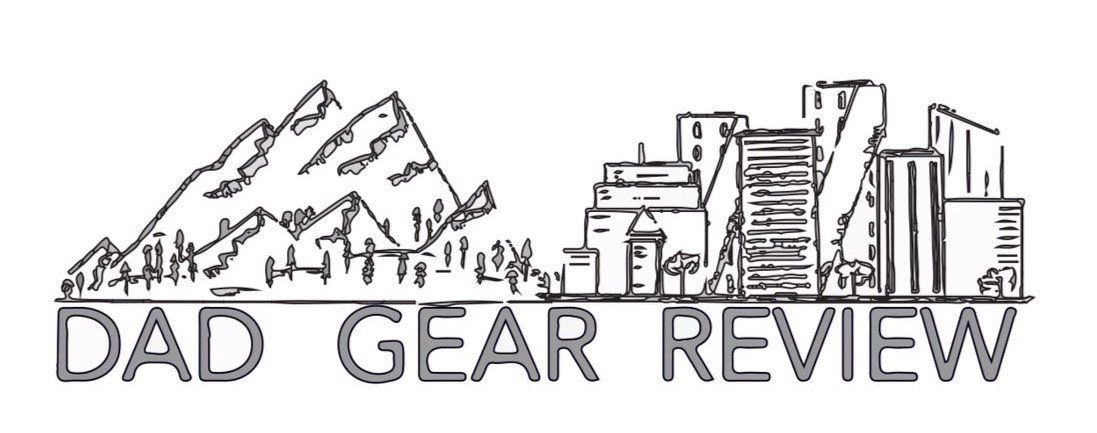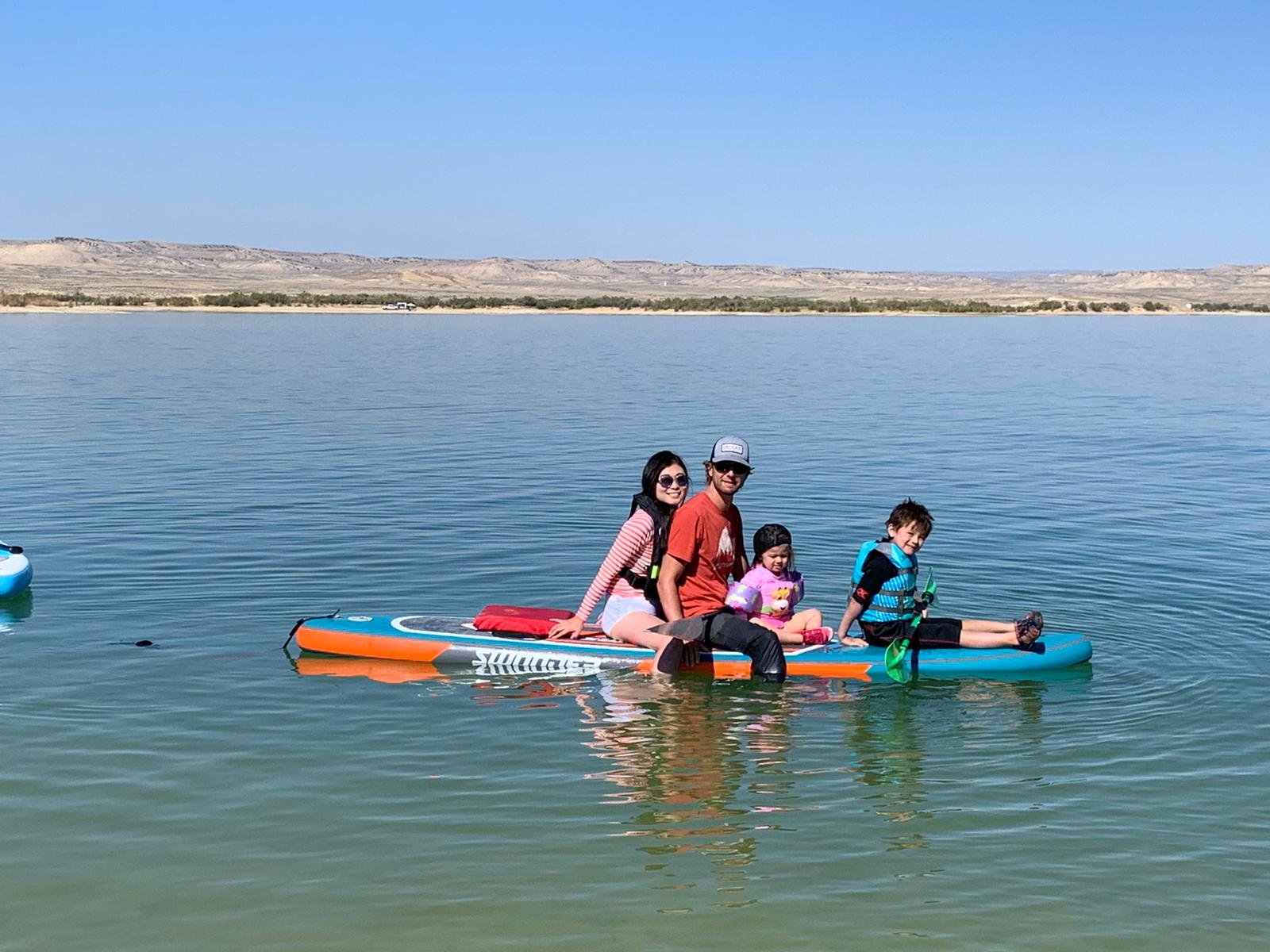
DGR Speaks to Pale Blue Earth CEO Tom Bishop About Cleaner Rechargeable Batteries, Camping with Kids, and Spending Time in the Wilderness Alon
by Steven John
On February 14th, Valentine’s Day of the year 1990, just before the spacecraft Voyager 1 exited the solar system, departing our corner of the universe forever, the craft turned around to snap one last picture of our planet, earth, the sphere you and I are both occupying at this very moment.
From a distance of about four billion miles, the image, the capture of which had been suggested by the late, great Carl Sagan, depicts earth as little more than a pale blue dot. Fittingly, those were the words Sagan used to describe our planet and which became the title of one of the last of his books. In Pale Blue Dot, Sagan implores us:
“Look again at that dot. That's here. That's home. That's us. On it everyone you love, everyone you know, everyone you ever heard of, every human being who ever was, lived out their lives …. The Earth is the only world known so far to harbor life. There is nowhere else, at least in the near future, to which our species could migrate. Visit, yes. Settle, not yet. Like it or not, for the moment the Earth is where we make our stand.”
How best do we make that stand and protect our pale, fragile, beloved blue dot? You know the drill: eat local food when you can, recycle whenever possible, seek cleaner sources of energy, and on it goes. In the pursuit of all that, in a perfect world we’d all start composting all food scraps and raising much of what we eat. We’d repair and hand down every garment. We’d install solar panels and buy EVs. We’d do all that and more.
In the real world, for many reasons, much of that is just not plausible. But hey, how about this for helping out our pale blue dot: buy some batteries. Not some big house-powering geothermal charged battery banks that will take you off the grid, just some AAs or 9-volts or AAAs. But to be clear, we’re not talking about disposable batteries; instead, I suggest you buy some genuinely efficient and effective rechargeable batteries from a genuinely pale blue dot simpatico company that is quite appropriately named Pale Blue Earth.

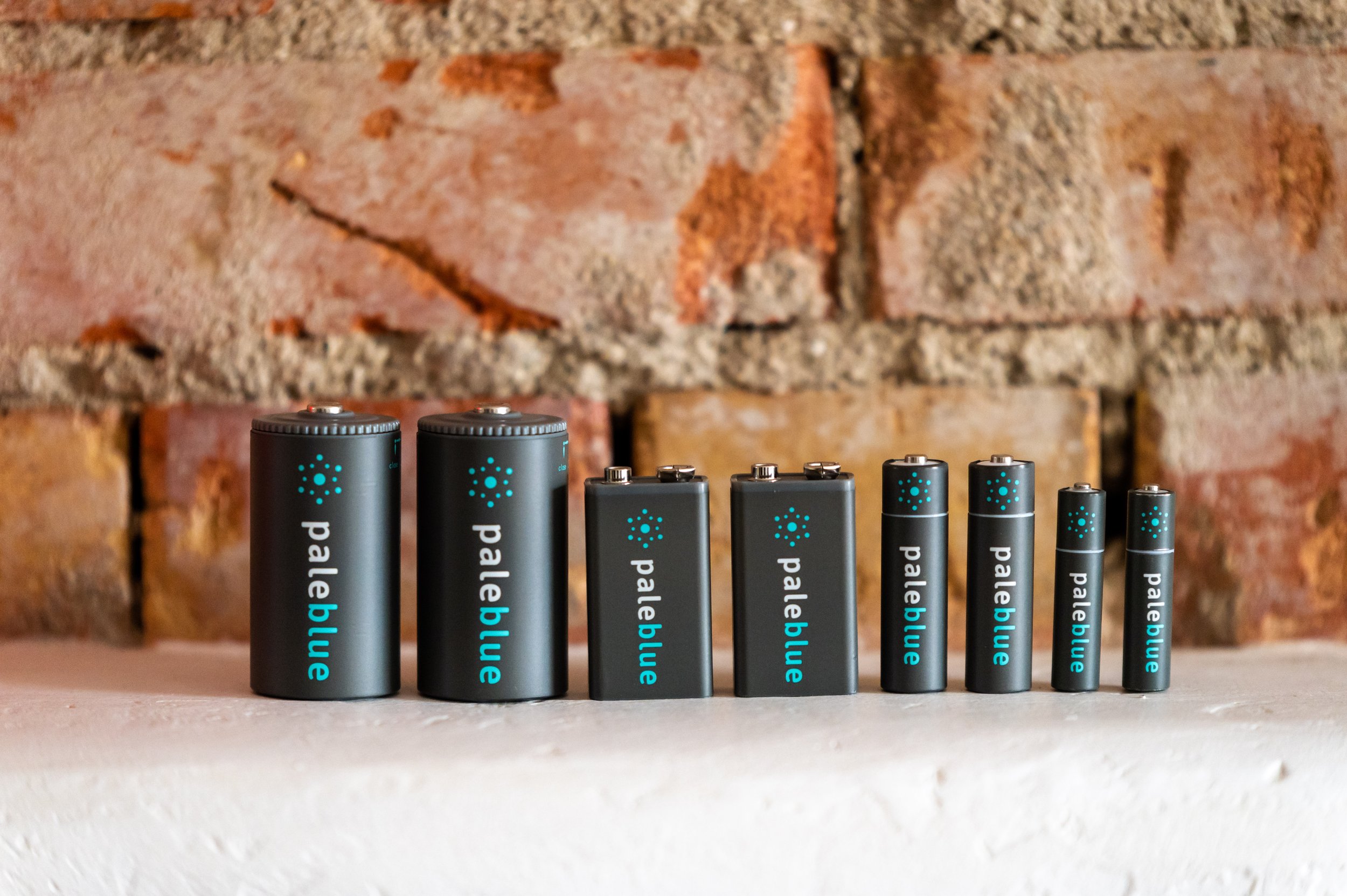
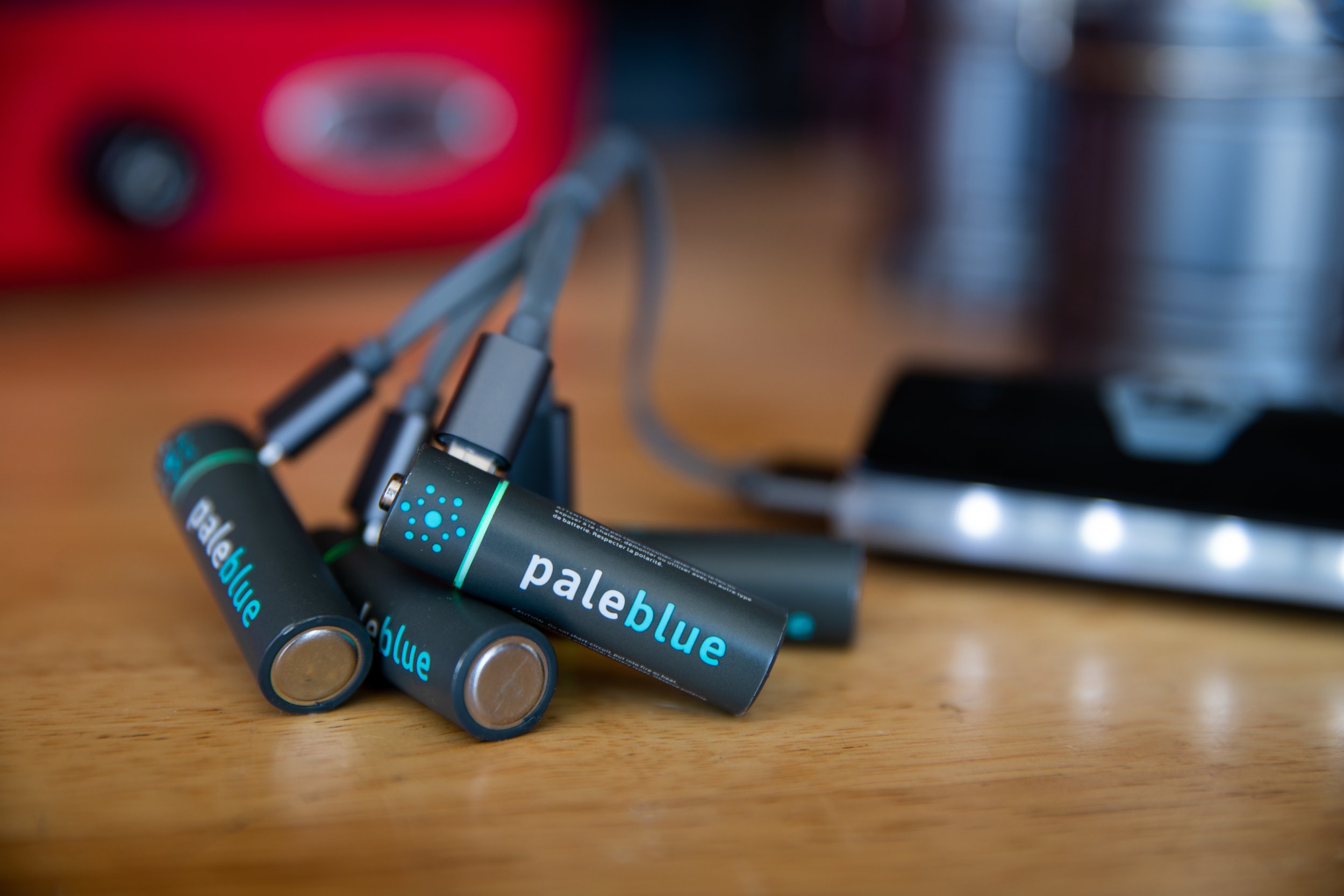
We’d already been using Pale Blue Earth batteries in our house for some time – especially in those power-hungry devices like camping lanterns and flashlights and such – so I was sold on the brand in terms of hardware efficacy, but when I got a chance to speak with Pale Blue Earth’s founder and CEO, Tom Bishop on behalf of Dad Gear Review, I jumped at the chance to learn more about what powered the company itself, if you’ll permit a delightful pun.
I was heartened to find that the inspiration for starting a company devoted to making cleaner, greener batteries began with a youth spent in the mountains.
When I asked Tom Bishop what inspired the founding of Pale Blue Earth, he replied: “So I've tried to focus my career on things that are important to me in whatever community I'm in at that stage of my life. So in the early days it was the snowboard world. My community growing up was board sports and that was where I found my social footing and kind of meaning in life.
“And then later I went on to work for a headphone company, and music, headphones, and product development was kind of my focus – it was Skullcandy to be clear on this one – and Skullcandy was doing everything in their power to support the same community, which was board sports, action sports and the likes, so in that same vein.
“After I had kids, I've got a four-year-old and an eight-year-old now” (I stopped Tom here to share that we were in the exact same four-year-old and eight-year-old boat, by the way, then he went on) “I went to work in a company that makes pulse oximeter socks for babies, it's called Owlet. And the focus there, at that stage in life, was trying to take care of the community of people that were at that stage in life and new parents.
“So now I’ve kind of got to this next stage in life and my kids are my focus and my family is my focus for sure, but their future is the real focus. It's kind of like: ‘What can I do with the skills that I've developed along the way?’ And so the inspiration of this is just trying to make as much of an impact on the future as possible, with the resources that I have available to me.’”
Big picture thinking through the lens of his own family, in other words, with said lens directing this understated but highly driven guy to innovate, create, and then improve – I’ll say it for him, because it turns out Tom Bishop doesn’t like to talk too big of a game about himself or his brand. But these are batteries you can plug in via micro-USB (and soon USB-C) and charge off an outlet, a car battery, or a solar panel, and that’s pretty damn cool.
The inspiration understood, we turned to the everyday, and I asked Tom: “Who is the ideal user when you close your eyes and think of the brand? And what are the ideal applications for the batteries?”
“Yeah, I mean, at this stage in the company, we're focused on telling inspirational stories about outdoor living and lifestyle – at this stage, we talk a lot about that. But really the ideal customer is anyone who is using alkaline batteries, which is kind of a very broad market. It's 85% of the market, which is everybody and anybody. We're here in Park City Utah and we kind of developed – well, let's say gained our meaning in life – by getting outside as much as possible. So we like to focus on that market for now. As [for uses], they should be good for anything that you're using single-use batteries in and rechargeable batteries as well … If you're already using rechargeable batteries like nickel metal hydride, good on you for doing that. And if you want to switch to lithium [like these] and get the performance improvements from lithium, that's great too. But really we want to focus on anyone that's using alkaline.”

Photo by Jeff Gilford

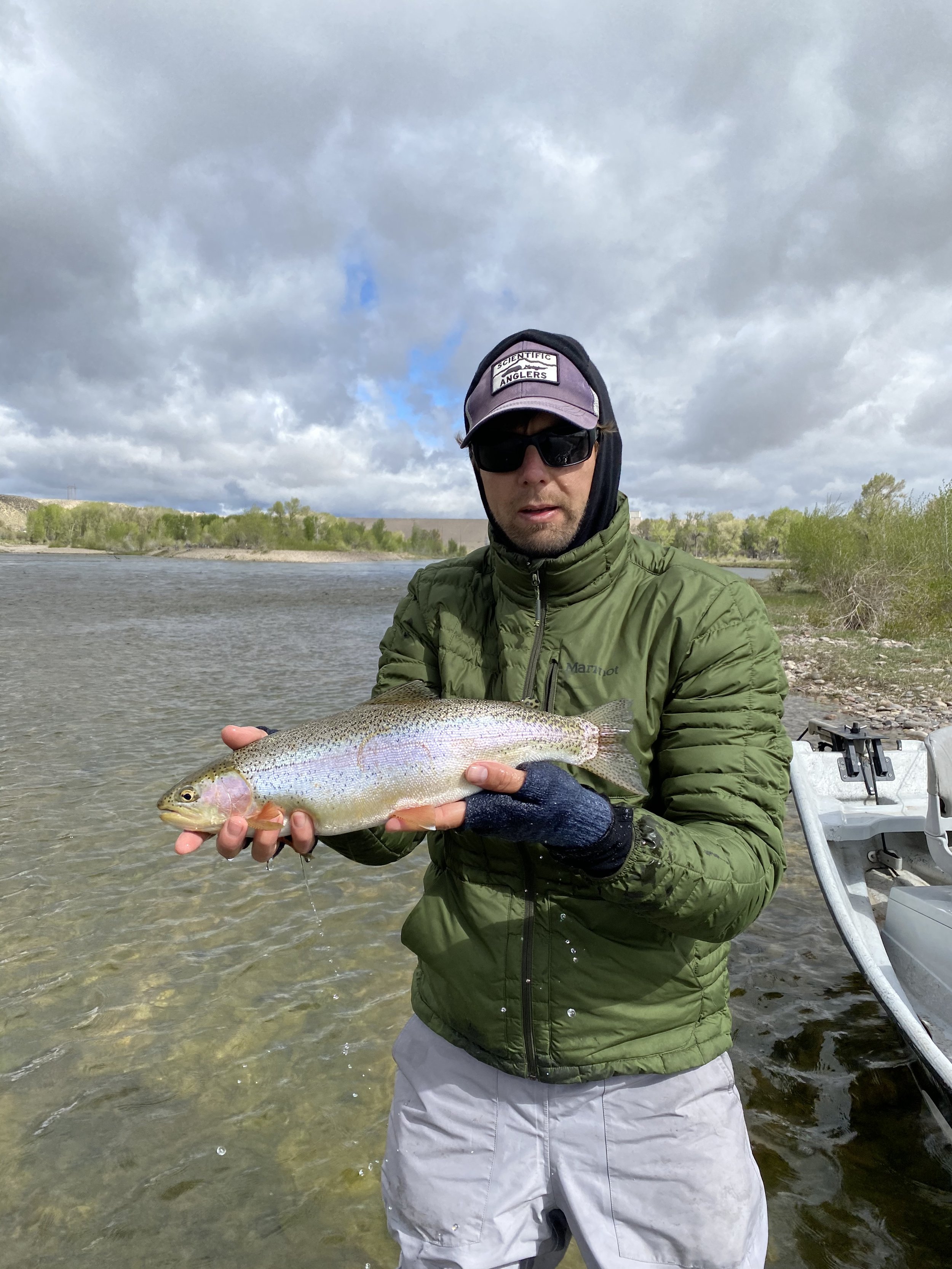
What he means, to be clear, is to focus on anyone using single-use disposable batteries, because those are bad for the planet and for your own bottom line. With a few exceptions, as Bishop was quick to own.
“So I would say that there's one caveat on [using disposables]. Because the batteries are fairly expensive, you want to get a good ROI. You don't want to put them in a TV remote that's going to sit there and maybe going to get a recharge every 12 months, depending on your remote and how much you're watching TV, I suppose. To get a good return on investment for a customer, they need to recharge the batteries five or six times, and then they're making money.”
The conversation then moved a bit, staying on batteries, but shifting back outdoors, as it were. I asked Tom: “How does your life experience and your affinity for the outdoors influence your approach to technology?”
“Yeah, so that's a long story, my outdoor life,” he answered. Then, after thinking on it for a moment, Bishop went on. “Let's say my parents were basically homesteading when we were growing up in the countryside. There wasn't a lot going on at where we were. So we were outside all day, every day. And I don't find as much inspiration indoors as I do outdoors. Indoors is okay, it's comfortable, but outdoors is where the good ideas come from. And so for our focus and what we're doing, a lot of this is technology based, and it's easy to imagine spending time inside thinking about the technology and the product, and we definitely do enough of that, but the applications that inspire us are our outdoors… so we're focused on those use cases.”
“We want to know how people are using our products outdoors in those spaces. And those are generally a little bit more harsh of an environment from a user standpoint. So if the product is going to get used on a camping trip, it's probably going to need to endure, from a reliability and usability standpoint, a harsher environment than it might if it's just in your electric door locks at home. And so by focusing on that, from a marketing perspective and from a consumer use perspective, we also get the benefit of making sure the product works well in the harsher environments.”
“Almost like an overbuilt approach, right?” I inquired.
“Yeah, essentially. If it can survive in my outdoor products, in the mountains of Utah, it's probably going to be good in lower elevations and warmer places.”
With that, we moved on to talk about mountains and lower elevations and everywhere in between. I asked: “What are your tips for enjoying the outdoors with family and specifically with younger kids?” to which Tom Bishop replied:
“So I've got a four-year-old and eight-year-old, and we were fortunate enough to buy a camper just before the whole COVID thing to started. And so we spent a lot of time the last couple of years getting them outdoors, outside camping. The kids don't need much, it's interesting, as long as we've got good food and find a way to get them a midday break if they're having a lot out of activity outside. Sometimes they're happy enough just to play in the dirt and go on a mountain bike ride and have some food and keep it simple.”
“I like the idea of letting kids get a little uncomfortable, pushing them a little further, maybe taking a longer bike ride than you might have, just to push them a little bit further than they might otherwise go. It’s just to get them used to being a little uncomfortable. But truth is sometimes sitting around camp, if they've got a stick and some soft dirt nearby, kids just seem to be able to find endless entertainment, in flipping over rocks and exploring even just an acre around the campsite.”
We next spoke about camping and its attendant gear for a while, and as both Bishop and I can easily geek out over talk of tents and packs and such, I’ve taken the liberty of editing much of the chat down. But when I asked him about a few pieces of can’t live without gear, he hit on the classics, saying: “It's a good sleeping bag. No one wants to wake up tired and cold in the morning, so that's always been a priority, a good sleeping bag and sleeping pad. For kids, head lamps and good. And food. Food and sleep are the keys for the little guys.”
As for his thoughts on ways to enjoy the outdoors in a green and sustainable way, Bishop had some great insights, that can be summed up like this: if you’re camping, you’re already consuming less of the planet’s resources even as you enjoy the place all the more.
“Dropping single use anything has got to be a focus,” he said. “I think if you're using something once and throwing it away, there's got to be a better alternative. And primarily we're focused on that in the battery space just because as far as we can tell, the largest single used product category that is still super ubiquitous and, until recently, didn't have a path to a good reusable solution with mass adoption rates is batteries. And so we're focused on that.”
“But I think inevitably just by being camping and out of the house and turning the thermostat way down on the house when you leave and kind of cutting your normal resources use, I think being outside, camping, you're just going to use a lot less resources. I do see some people still using paper plates and stuff around the camp sites, but for the extra 10 minutes to wash dishes, we haven't gone that route. But yeah, I think just being out there, you're inevitably using a lot less resources and trying to be smart about the single use stuff is the obvious option.”
Nice to know that simply going camping can mean going greener, no? Especially if your batteries are Pale Blue Earth. And no more paper plates, either.
